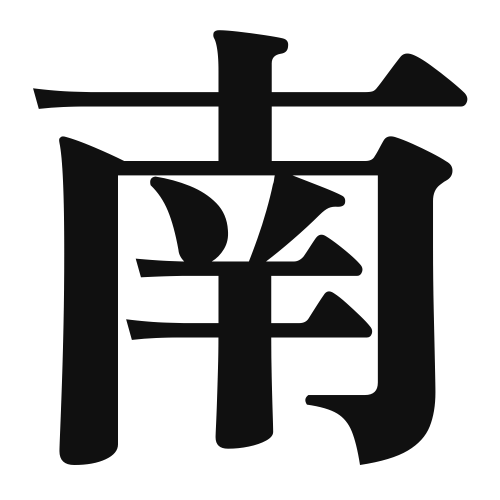1. Overview of Meaning
The kanji “南” (nan) means “south.” It is used to indicate the direction or location that is opposite to north.
2. Formation and Radical
Formation of the Kanji: The kanji “南” is a phono-semantic compound character. It combines the phonetic element and the semantic meaning, representing the concept of “south.” The character is derived from ancient pictographs.
Radical: The radical for “南” is “南” itself, which is used to denote directions related to the south.
3. Examples of Usage
Common Words and Phrases:
- 南風 (なんぷう, nanpū) – south wind
- 南国 (なんごく, nangoku) – southern country
- 南部 (なんぶ, nanbu) – southern region
Example Sentences in Daily Conversation:
- 今日は南の方に行きます。 (きょうはみなみのほうにいきます。) – I will go to the south today.
- 南の風が吹いています。 (みなみのかぜがふいています。) – The south wind is blowing.
4. Synonyms and Antonyms
Similar Kanji:
- 西 (にし, nishi) – west: While “南” refers to the south, “西” indicates the west direction.
- 東 (ひがし, higashi) – east: This kanji represents the opposite direction of west.
Antonyms:
- 北 (きた, kita) – north: This is the direct opposite of “南.”
5. Cultural and Historical Background
Relation to Japanese Culture: The concept of directions, including “南,” plays a significant role in Japanese culture, especially in traditional practices such as feng shui and in the orientation of buildings.
Proverbs and Idioms:
- 南無阿弥陀仏 (なむあみだぶつ, namu amida butsu) – A phrase used in Buddhist practice, expressing devotion to Amida Buddha, often associated with the direction of the south.
